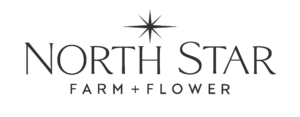
Do not skip this step. Just make the schedule.
Staying organized and keeping track of crops is essential to make your growing season successful. Odds are that if you don’t have a good start, you’re going to struggle through the season.
This schedule is going to be based off of your frost dates for your growing zone. If you don’t already know this information, you can easily find your hardiness zone with the USDA and lookup your frost dates in the farmer’s almanac.
We’re in zone 6a and our frost dates are May 19th and September 22nd.
In your seed-sowing schedule you’ll want to have the following details:
- Last frost date
- Flower variety
- Days before last frost to begin sowing seeds
- First sow date (this can be calculated by adding the number of days to your last frost date. Example: if my sow date is 6 weeks before my last frost, I would sow the seeds on April 7th)
If you’re growing large quantities, I also recommend having a column for the number of trays you’ll be sowing into (I start almost everything in a 72-cell 1020 tray). That way, you’ll be better prepared with how much time you need to block out for planting seeds.


Getting Organized
I keep myself on track a couple different ways.
I like to start with a spreadsheet because I have a lot of varieties and it’s easier for me to make changes as I go or to add more details. Once I have everything planned out, I also like to go through my seed packets and rubber band each days’ worth of seeds together. This not only makes things easier when it’s time to plant, but it’s double check to make sure I have all of my seeds.
I also add my schedule to my calendar and block out time. Usually I’d Fridays’ that I have dedicated to planting seeds, but when I have a big task (like sweet peas) I will block out two or three days so I can make sure I get them all done.



